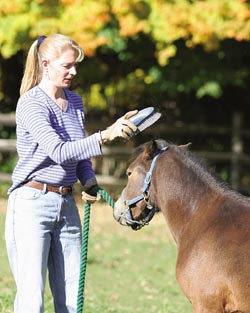QUICK BIO
NAME: Jackie Green
COMPANY: Audio-Technica
TITLE: Vice President of R&D/Engineering
OVERTIME: Early in her career, Green became interested in improving the performance of audio equipment. Her leadership at Audio-Technica has produced significant engineering feats, including the SpectraPulse wireless mic system.
SCN: Like many dedicated innovators in the pro audio industry, your passion for sound and technology was borne of an interest in music. As the story goes, it seems your career in audio began at the crossroads of these three elements, when in fifth grade your bass guitar playing left you with a blown-out amp and a damaged stereo. As your education progressed, you forewent majoring in veterinary studies at Cornell University and instead translated your musical talents into Tonmeister training, which later led to your interest in physics and electrical engineering. How did your time in the recording studio convince you to become a developer and designer of pro audio technology?
Jackie Green: Things were always breaking and didn’t sound good enough. It’s almost that simple. I’d book studio time and get there and find equipment not working, or equipment not working the way I wanted it to, or it would stop working right when I needed it most. It didn’t take long for me to realize that someone ought to be able to do this better. As an extension of this, I often didn’t like how my recordings sounded. Again, I thought there must be a way to make things sound better. I decided to find out how.

When not working on the latest transducer technology, Jackie Green pursues another passion—breeding, training, and showing horses.
JG: Having the U.S.-based engineering team allows us the luxury of working on ideas and projects that may not actually be designed for production. Our Japanese engineering department works at the parent factory—and “factory” is an important word there. They are more accountable to producability and bottom line for the factories, so their job is much more difficult. We have some “mega creatives” in Japan, but sometimes that creativity has to be channeled into production-related goals. Having separate departments leaves the entire organization a bit more free to experiment and find technical solutions more quickly than would otherwise happen. Our structure naturally encourages us to remain close to our end users and find and tackle the challenges they face.
SCN: Audio-Technica was ahead of the curve in re-tooling its manufacturing processes to become more “Green”. How do environmental considerations play into your design goals?
JG: In our company, most of the people that I’ve interacted with over the years have an innate tendency towards doing the right thing. It’s never been about the fastest, cheapest way to make money. I think our passion for our products naturally drives us to be constantly mindful about many things, and to be honest, our Japanese parent company was especially focused on an early commitment to “green stewardship” well before this was the popular thing to do. It cost us time and money, but it was the right thing to do. It’s honorable, and that is at the core of the company.
SCN: How would you complete the following sentences?
The difference between hearing and listening is... engaging the mind to process what is heard. Hearing is just a force without meaning. Listening is a way we organize that force into something qualitative and meaningful.
You have to go back to the drawing board if you want to... learn from your mistakes. It’s not productive to continue to build and design if you are doing so to fix things that could have been done more simply. The results are usually better and faster if you are willing to scrap work and start from a fresh perspective.